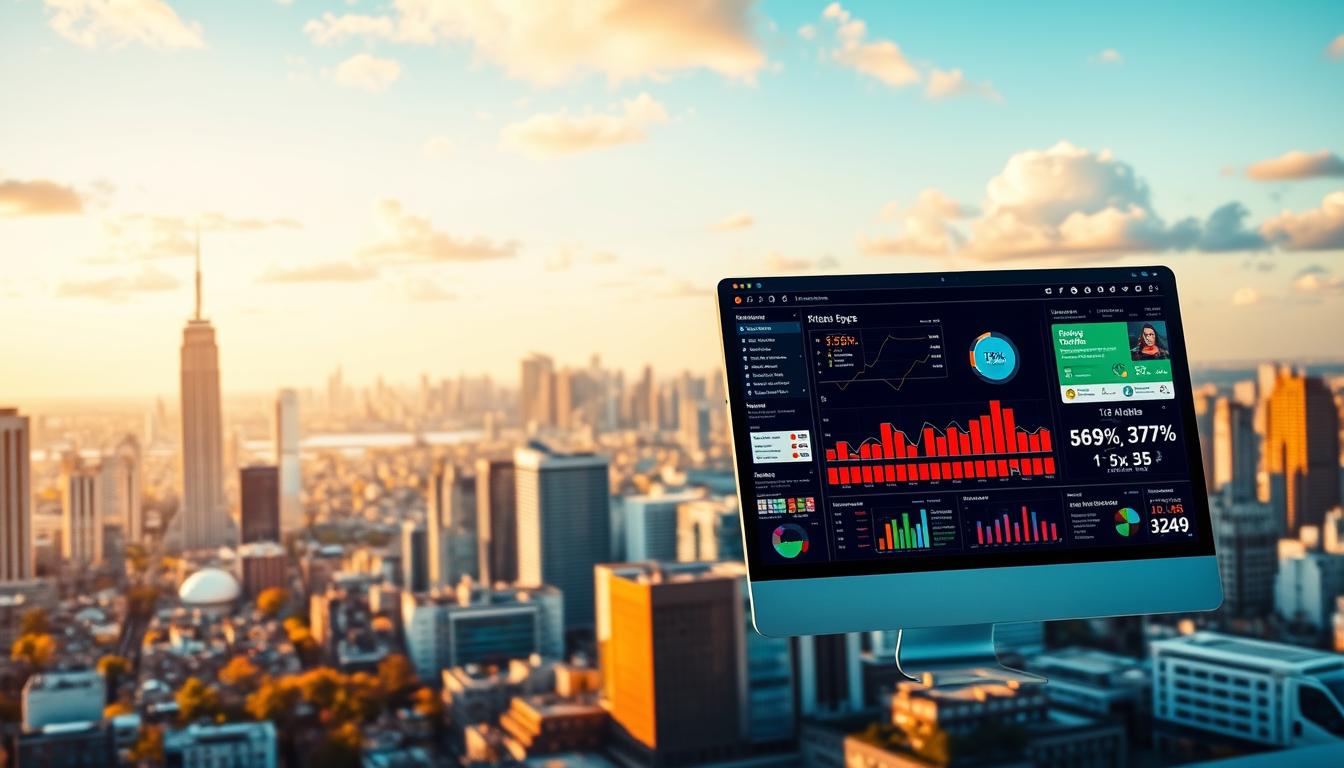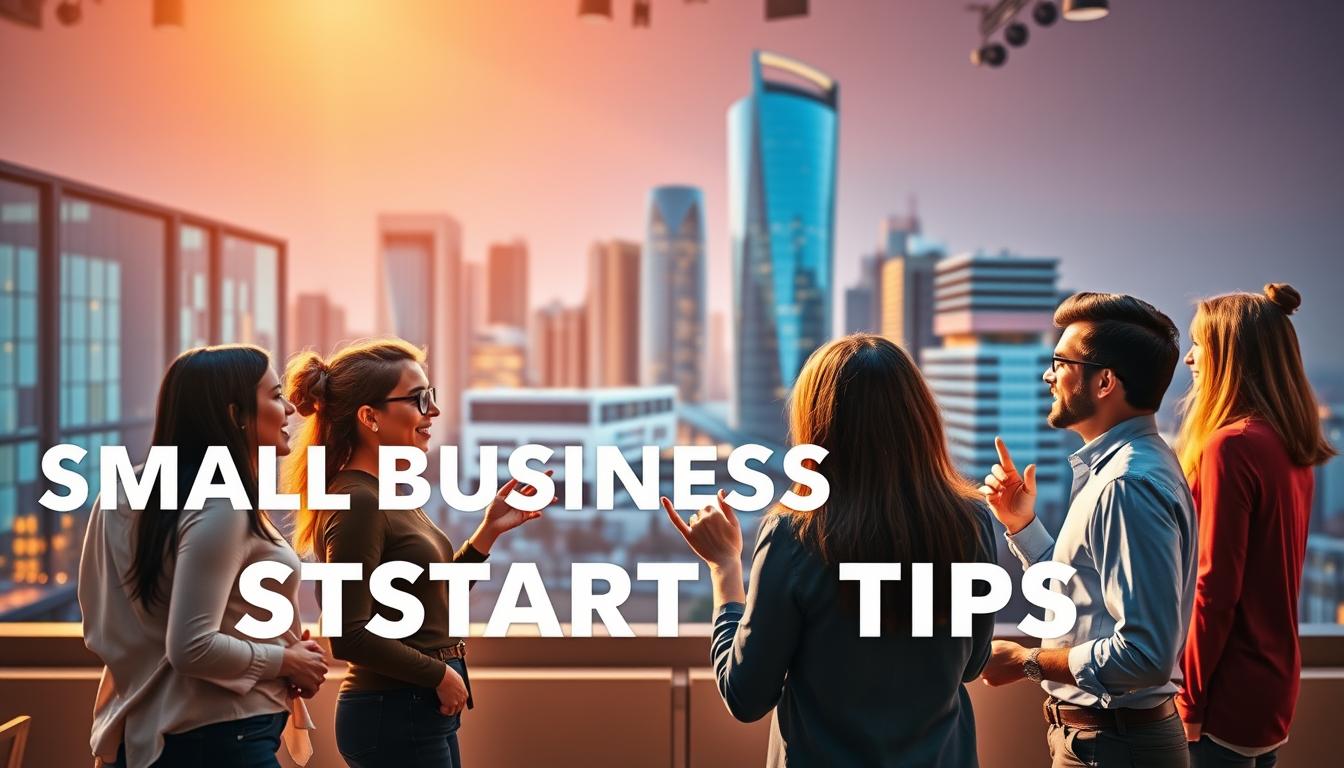Did you know that only 22% of visitors type a URL directly into their browser? The rest come from search engines, social media, and other sources. If your online store relies solely on direct visits, you’re missing out on huge opportunities.
I’ve helped dozens of businesses grow their digital presence, and one thing remains clear: diversifying your approach is key. In fact, 21% of entrepreneurs struggle with low engagement because they focus on just one or two channels.
In this guide, I’ll share 17 proven methods to expand your reach—from refining SEO basics to leveraging influencer collaborations. Whether you’re just starting or looking to scale, these insights can help.
Want to dive deeper? Check out my digital library for free e-books, courses, and design tools. Plus, join our live webinars for hands-on tips!
Key Takeaways
- Only 22% of visitors arrive via direct URL entries.
- Multi-channel approaches outperform single-source strategies.
- 21% of businesses face challenges due to limited engagement.
- 17 actionable tactics will be explored in this guide.
- Free resources are available for continuous learning.
Why Boosting Ecommerce Traffic is Essential for Your Business
Traffic is the lifeblood of any online business, shaping both sales and visibility. Without it, even the most compelling products can struggle to gain traction. In fact, 33% of retail and professional services traffic comes from organic search, and first-page Google results capture 71% of clicks. This makes it clear: attracting visitors is non-negotiable for success.
The Impact of Traffic on Sales and Brand Visibility
Increased traffic directly correlates with more conversion opportunities. Every visitor is a potential customer, and more touchpoints mean higher chances of closing a sale. Additionally, there’s a visibility snowball effect: more traffic leads to improved search rankings, which in turn boosts credibility and attracts even more visitors.
Take the example of Blackbird Baking Company, a Toronto bakery. They built Instagram engagement before their launch, ensuring strong opening sales. This strategy not only drove traffic but also established their brand as a trusted name in their niche.
How Low Traffic Affects Your Online Store’s Performance
Low traffic can cripple your business. Sites with fewer than 1,000 monthly visitors have a 94% lower conversion potential compared to high-traffic competitors. Stagnation becomes a real risk, and without consistent growth, your business may struggle to survive.
Moreover, 61% of marketers cite traffic generation as their top challenge. If you’re not actively working to attract visitors, you’re missing out on opportunities to grow and thrive. The key is to diversify your approach and focus on strategies that drive consistent, high-quality traffic.
Start with a Solid SEO Foundation
A strong SEO foundation is the backbone of any successful online strategy. It ensures your content reaches the right audience and ranks higher on search engines. Without it, even the best products or services can go unnoticed.
To build this foundation, focus on four key pillars: technical optimization, keyword strategy, content quality, and backlinks. Each plays a critical role in improving your site’s performance and visibility.
Understanding the Basics of SEO
Technical optimization ensures your site is fast, secure, and easy to navigate. Tools like Ahrefs or Semrush can help identify areas for improvement. For example, title tags under 55 characters increase click-through rates by 37%. A well-formatted title like “Organic Chemical-Free T-Shirts for Men” is both concise and descriptive.
Keyword strategy involves targeting the right terms. Long-tail keywords, such as “Running shoes for flat feet”, convert 2.8x better than generic ones. They also attract more qualified leads.
How to Optimize Your Site for Search Engines
Content quality is non-negotiable. High-value, engaging content keeps visitors on your page longer, signaling to search engines that your site is trustworthy. Rawganique, for instance, uses schema markup to enhance its visibility in “chemical-free apparel” searches, earning rich snippets in results.
Lastly, mobile-first indexing is crucial. With 70% of searches starting on smartphones, your site must be mobile-friendly. This ensures a seamless experience for users and boosts your rankings.
Leverage Content Marketing to Attract Visitors
Content marketing is a game-changer for attracting and engaging your audience. It’s not just about creating content; it’s about delivering value that resonates with your readers. Companies with active blog posts see 55% more visitors, proving that a well-crafted strategy can make a significant impact.
Creating Valuable Blog Posts That Drive Traffic
Start by focusing on quality over quantity. Use the Skyscraper Technique to improve existing top-ranking posts by adding 25% more depth or value. For example, Luxy Hair repurposes influencer content into detailed blog tutorials, attracting a wider audience.
Another tip? Offer downloadable resources like sizing charts in exchange for contact info. This not only builds your email list but also establishes trust with your readers.
Using Videos and Infographics to Engage Your Audience
Visual content is incredibly powerful. YouTube reaches 2.7 billion users globally, making it a must-have platform. Product pages with videos have 27% higher add-to-cart rates compared to text-only versions.
Infographics are another great tool. They simplify complex information and make it shareable, increasing your reach. For example, our digital library offers templates to help you create engaging videos and infographics effortlessly.
Master the Art of Social Media Marketing
Social media has become a cornerstone for connecting with your audience and growing your brand. With 39% of consumers preferring creator-driven content over branded posts, it’s clear that authenticity drives engagement. To succeed, you need to choose the right platforms and build trust with your followers.
Choosing the Right Platforms for Your Audience
Not all social media platforms are created equal. Each caters to a unique audience, and your choice should align with your goals. For example, Pinterest drives 3.8x more retail conversions than Twitter, making it ideal for visual products.
Blackbird Baking Company’s Instagram “Follow-Back Strategy” is a great example. They targeted local foodies by engaging with their community, which helped them build a loyal following. Similarly, Reddit AMAs can be powerful. Answering 10+ questions daily in niche subreddits with helpful links can establish your authority.
Engaging with Followers to Build Trust
Engagement is key to building trust. TikTok’s #BookTok trend, which increased Barnes & Noble’s YA sales by 150%, shows the power of trend-jacking. By staying relevant and interactive, you can turn followers into advocates.
Here’s a quick comparison of popular platforms and their strengths:
| Platform | Strengths |
|---|---|
| High retail conversions, visual appeal | |
| Community engagement, influencer collaborations | |
| Niche authority, AMA opportunities | |
| TikTok | Trend-jacking, viral potential |
Want to dive deeper? Join our webinar on Social Media Funnel Optimization in the digital library. It’s packed with actionable tips to help you maximize your traffic and engagement.
Invest in Paid Advertising for Immediate Results
Paid advertising can deliver quick, measurable results for your business. Whether you’re launching a new product or scaling your brand, ads provide a direct path to your target audience. With platforms like Google Ads and social media, you can reach potential customers instantly.
How to Use Google Ads Effectively
Google Ads is a powerful tool for driving traffic and conversions. Start by using the 5:3:2 budget rule: allocate 50% to proven performers, 30% to scaling tests, and 20% to experimental campaigns. This approach ensures a balanced strategy.
Negative keywords are another game-changer. They reduce wasted spend by 22-35% by filtering out irrelevant searches. For example, Tile Shop increased their ROI 4x using dynamic remarketing, a feature that targets users who’ve already interacted with their site.
Maximizing ROI with Social Media Ads
Social media platforms like Facebook and Instagram offer unique opportunities to engage your audience. Structure high-converting Facebook carousels with urgency timers to create a sense of immediacy. This tactic encourages users to act quickly, boosting your ROI.
For example, a well-designed carousel ad can highlight multiple products in a single post, increasing click-through rates. Pair this with compelling visuals and clear calls-to-action for maximum impact.
Ready to optimize your campaigns? Download our Google Ads checklist from the resource library. It’s packed with actionable tips to help you get the most out of your ad spend.
Optimize Your Website for Mobile Users
Mobile users now dominate online activity, making optimization a must. With 70% of US online purchases starting on mobile, your site’s mobile experience can make or break customer engagement. Slow speeds or clunky navigation can drive users away, costing you valuable opportunities.
Pages that load in under 2 seconds see 15% higher conversions. This highlights the importance of speed and simplicity in keeping mobile users engaged. Here’s how you can improve your mobile experience and stay ahead of the competition.
Why Mobile Optimization is Non-Negotiable
Ignoring mobile users is no longer an option. Mobile devices account for over 58% of global web traffic, and this number continues to grow. A responsive design ensures your site looks great on all screen sizes, while fast loading times keep users from bouncing.
For example, the Harry Potter Store redesigned their mobile navigation, resulting in a 40% increase in conversions. This shows how small changes can have a big impact.
Tips for Improving Mobile User Experience
- Implement AMP: Accelerated Mobile Pages (AMP) boost speed scores and improve performance on product pages.
- Thumb-Friendly CTAs: Place buttons in the bottom 25% of the screen for easy access.
- Avoid Intrusive Popups: Google penalizes sites with layout-shifting interstitials, so keep popups minimal and non-disruptive.
- Optimize Images: Compress and resize images to ensure they load quickly on all devices.
For more insights, check out these best practices for mobile optimization. Additionally, download our free mobile UX audit templates from the digital library to start improving your site today.
Utilize Email Marketing to Drive Repeat Traffic
Email marketing remains one of the most effective ways to connect with your audience and drive repeat engagement. With an average $36 ROI for every $1 spent, it’s a powerful tool for nurturing relationships and boosting sales. Whether you’re recovering lost revenue with cart abandonment emails or building a loyal email list, the right strategy can make all the difference.
Building an Email List That Converts
Creating a high-quality email list starts with offering value. Use Lead Magnet Stacking to entice signups. For example, provide a free sizing guide paired with a 10% discount coupon. This approach not only grows your list but also encourages immediate purchases.
WordStream’s weekly newsletter is a great example. By delivering actionable tips, they drive over 4,000 monthly blog visits. This shows how consistent, valuable content can keep your audience engaged and coming back for more.
Crafting Emails That Encourage Clicks
Timing and personalization are key to crafting effective emails. Sending emails on Thursday at 8pm local time outperforms other times by 18%. Pair this with personalized product recommendations using tools like Klaviyo’s AI to increase relevance and click-through rates.
Here’s a quick guide to optimizing your email campaigns:
| Strategy | Impact |
|---|---|
| Lead Magnet Stacking | Boosts signups and immediate sales |
| Personalized Recommendations | Increases engagement and conversions |
| Optimal Send Times | Maximizes open and click rates |
Ready to take your email marketing to the next level? Explore our collection of 30 proven email templates designed specifically for small businesses. These templates are crafted to help you save time while driving results.
Harness the Power of Influencer Marketing
Influencer marketing has transformed how brands connect with their audience. By partnering with the right voices, you can amplify your reach and build trust with potential customers. Micro-influencers, for instance, drive 3.86% engagement, outperforming mega-influencers who average just 1.5%.

Collaborating with influencers isn’t just about promotions; it’s about creating authentic connections. Follow the 80/20 content rule: 80% educational or entertaining content and 20% promotional. This balance keeps the audience engaged while subtly driving action.
Finding the Right Influencers for Your Brand
Choosing the right influencers starts with understanding your audience. Look for creators whose values align with your brand and who have an engaged following. For example, @nikkichuhome’s interior design posts increased Tile Shop’s referral traffic by 40%.
Here’s a quick checklist to help you identify the best fit:
- Engagement Rate: Aim for influencers with 3% or higher engagement.
- Audience Demographics: Ensure their followers match your target customers.
- Content Quality: Look for creators who produce high-quality, authentic posts.
Collaborating with Influencers to Reach New Audiences
Effective collaborations require clear communication and mutual benefit. Offer a 50% upfront + 50% performance-based payment structure to align incentives. This ensures both parties are motivated to achieve results.
FTC compliance is also crucial. Always include #ad disclosures and avoid prohibited claims to maintain transparency and trust. Here’s a comparison of payment structures:
| Payment Structure | Benefits |
|---|---|
| 100% Upfront | Simple, but lacks performance incentives |
| 50/50 Split | Balances risk and rewards for both parties |
| Performance-Based | Maximizes ROI, but may deter influencers |
Ready to start? Download our influencer contract templates from the resource library to streamline your collaborations and ensure success.
Create High-Converting Landing Pages
Your landing page is often the first impression visitors have of your brand. It’s where they decide whether to stay or leave. A well-crafted page can significantly boost your conversions and improve your SEO performance. Let’s explore how to design pages that capture attention and use A/B testing to refine their effectiveness.
Designing Landing Pages That Capture Attention
First impressions matter. Use scroll heatmap analysis to optimize fold placement. This ensures key elements like headlines, CTAs, and testimonials are visible without scrolling. For example, adding urgency like “17 people viewing this” increased Bath & Body Works’ landing page conversions by 22%.
Another effective strategy is the PAS formula: Problem-Agitate-Solve. Start by identifying the visitor’s pain point, agitate it to create urgency, and then present your solution. This approach works wonders in headlines, subheads, and CTAs.
Using A/B Testing to Improve Performance
A/B testing is a game-changer for optimizing your site. For instance, red CTAs outperform green ones by 21% in ecommerce. Test different elements like headlines, images, and button placements to find what resonates best with your audience.
Video testimonials are another powerful tool. Pages with them convert 85% better than text-only versions. They build trust and credibility, encouraging visitors to take action.
| Element | Impact |
|---|---|
| Red CTAs | 21% higher conversions |
| Video Testimonials | 85% better conversion rates |
| Urgency Messaging | 22% increase in conversions |
Ready to optimize your landing pages? Join our webinar series for a free critique and actionable tips to drive more traffic and conversions.
Focus on Local SEO to Attract Nearby Customers
Local SEO is a powerful way to connect with nearby customers. With “near me” searches growing over 150% year-over-year, businesses that optimize for local search are seeing significant results. A complete Google Business Profile alone can generate 7x more clicks, making it a must-have for any local strategy.
Setting Up and Optimizing Your Google Business Profile
Your Google Business Profile is often the first thing potential customers see. Start by ensuring your profile is complete—add accurate business information, high-quality photos, and relevant categories. For example, a bakery optimized its profile and saw a 300% increase in direction requests.
If you don’t have a physical store, use service area hacks to target mobile customers. This allows you to specify the areas you serve without listing an exact address. It’s a game-changer for businesses like home services or delivery companies.
Using Local Keywords to Rank Higher
Local keywords are essential for ranking in your area. Incorporate terms like “best in [city]” into your content and meta tags. For instance, adding local schema markup can help your business appear in rich snippets for these searches.
Responding to reviews is another way to boost credibility. Use templates to craft professional responses that show you value customer feedback. This not only improves your reputation but also signals to search engines that your business is active and trustworthy.
- Complete your Google Business Profile for maximum visibility.
- Use service area hacks to target mobile customers.
- Incorporate local keywords into your content.
- Respond to reviews to build credibility.
Ready to take your local SEO to the next level? Download our 57-point optimization checklist and start attracting more nearby customers today.
Repurpose Content for Maximum Reach
Maximizing the reach of your content doesn’t have to mean creating more—it’s about working smarter with what you already have. By repurposing existing material, you can extend its lifespan, attract new audiences, and drive consistent traffic.
Turning Blog Posts into Podcasts or Videos
One of the most effective ways to repurpose blog posts is by transforming them into podcasts or videos. For example, the Shopify Masters podcast repurposes episodes into transcribed blog posts, doubling their reach. This approach not only saves time but also caters to different audience preferences.
When creating videos, focus on YouTube SEO tactics. Use keyword-rich descriptions, add timestamps, and include relevant tags. These small tweaks can significantly boost visibility and engagement.
Using Evergreen Content to Drive Consistent Traffic
Evergreen content is a goldmine for long-term results. Posts updated quarterly gain 25% more traffic year-over-year. To keep your evergreen material fresh, follow a 90-day refresh checklist:
- Update outdated statistics and facts.
- Swap old images for new, high-quality visuals.
- Add new calls-to-action to guide readers.
Another powerful method is the Content Cube: turn one blog post into three social clips, two email sequences, and one webinar. This strategy ensures your content reaches multiple platforms and formats, maximizing its impact.
Ready to start repurposing? Explore our content repurposing toolkit in the digital library. It’s packed with templates, checklists, and step-by-step guides to help you get the most out of your material.
Engage in Community Building and Forums
Building genuine connections online can transform how customers perceive your brand. Forum participants have a 23% higher lifetime value than other shoppers, proving that authentic engagement drives loyalty. Whether through Reddit threads or LinkedIn groups, these spaces let you share expertise while growing your traffic organically.
Mastering the Art of Community Participation
Follow the 10:1 rule in forums like Reddit: post 10 helpful comments before sharing one promotional link.
“This balance keeps trust high while subtly guiding users to your content,”
says a top-rated moderator. Beardbrand excels at this—their grooming tutorials on Beard Board dominate discussions, positioning them as industry leaders.
For LinkedIn groups, try these tactics:
- Post industry surveys and share results to spark dialogue.
- Respond to questions with actionable advice (not just links).
- Use polls to uncover pain points your product solves.
Establishing Authority Without Being Spammy
Over-promotion backfires—73% of users block brands that flood feeds with ads. Instead, focus on value-first interactions. For example:
| Platform | Best Practice |
|---|---|
| Answer niche questions in r/Entrepreneur | |
| Facebook Groups | Host AMAs with team experts |
| Discord | Create channels for troubleshooting |
Ready to refine your approach? Grab our free Community Playbook—it includes moderation guidelines, response templates, and engagement benchmarks to help you grow authentically.
Offer Free Resources to Attract Visitors
Offering free resources is a proven way to attract and engage your audience. Whether it’s downloadable guides, templates, or webinars, these tools provide value while building trust. For example, Sephora’s “Skincare Routine Builder” increased time-on-site by 3 minutes, showing how useful resources can keep visitors engaged.
Creating Downloadable Guides and Templates
Downloadable resources like guides and templates are excellent for capturing leads. Use the Tripwire Strategy: offer a free sizing chart and upsell a premium video course. This approach not only grows your email list but also drives conversions.
Content upgrade CTAs are another powerful tool. For instance, adding “Download spreadsheet template” within blog posts can increase engagement. Our library’s 135 Emotional Marketing Words Guide is a great example of crafting irresistible offers.
Hosting Free Webinars to Showcase Your Expertise
Webinars are a fantastic way to share knowledge and attract visitors. Topics like “2024 Trend Forecasts” drive 2x signups because they offer actionable insights. Hosting regular webinars positions you as an authority in your niche.
For example, our webinar series on SEO best practices has helped businesses improve their rankings and traffic. By providing value upfront, you build trust and encourage repeat visits.
- Use tools like Sephora’s “Skincare Routine Builder” to increase engagement.
- Implement the Tripwire Strategy to grow your email list.
- Host webinars on trending topics to attract more signups.
- Offer downloadable templates to enhance your content.
Ready to get started? Explore our free resources and start attracting more visitors today. From guides to webinars, we’ve got everything you need to succeed.
Monitor and Analyze Your Traffic Sources
Data-driven decisions start with knowing which channels deliver the best results. Pages with three or more internal links earn 40% more organic visits, proving that smart tracking leads to real growth. Let’s explore how to measure what matters and turn insights into action.
Mastering Google Analytics for Clear Insights
GA4’s custom reports reveal exactly how visitors interact with your website. Set up ecommerce-specific metrics like:
- Session conversion rates by traffic source
- Average order value from social referrals
- Scroll depth on product pages
UTM parameters take this further. Tag links with source=instagram&medium=story to see which social posts drive sales. This eliminates guesswork when evaluating strategies.
Identifying Your Highest-Value Traffic
The Traffic Source Quadrant helps prioritize efforts. Compare volume against conversion quality:
| Source Type | Action |
|---|---|
| High Volume/Low Conversion | Improve landing pages |
| Low Volume/High Value | Increase budget |
| High Volume/High Value | Scale campaigns |
Heatmap tools like Hotjar show where visitors lose interest. One fashion brand reduced bounce rates by 18% after moving CTAs above common scroll drop-off points.
Ready to dive deeper? Join our free analytics masterclass to discover advanced tracking techniques that drive consistent traffic and SEO improvements.
Stay Updated with the Latest Trends
Staying ahead in today’s fast-paced digital landscape requires constant adaptation to new trends. Voice shopping, for instance, is projected to hit $40 billion by 2024, while AR product views boost conversions by 40%. These shifts highlight the importance of keeping your strategies fresh and relevant.
Keeping an Eye on Emerging Trends
Analyzing trend predictions for 2024 can help you stay competitive. Key areas to watch include:
- Social commerce: Platforms like Instagram and TikTok are transforming how people shop.
- UGC video: User-generated content builds trust and drives engagement.
- AI personalization: Tailored recommendations enhance the customer experience.
For example, IKEA’s AR app, IKEA Place, reduced returns by 14% by letting customers visualize products in their homes. This shows how innovative tools can solve real customer pain points.
Adapting Your Strategies to Stay Ahead
To stay competitive, adopt the Trend Testing Framework. Allocate 15% of your budget to experimental channels. This allows you to test new ideas without risking your core operations.
“Innovation is essential, but balance it with proven methods to avoid shiny object syndrome,”
says a leading digital strategist. For instance, while exploring AR features, ensure your SEO and social media efforts remain strong.
Our quarterly trend analysis reports in the digital library can help you stay informed. From emerging technologies to consumer behavior shifts, these resources ensure you’re always one step ahead.
Conclusion: Elevate Your Ecommerce Traffic Today
Growth comes from combining proven strategies, not just one magic solution. When SEO, content, and paid ads work together, they multiply your results—like the store that doubled visits in 90 days using five tactics from this guide.
Ready to start? Grab our step-by-step checklist to implement these methods fast. For deeper learning, explore 8 strategies to boost traffic and join 8,000+ marketers in our digital library.
Your next breakthrough begins now. Let’s turn clicks into sales together at digitals.anthonydoty.com!
FAQ
How does increasing visitors impact my sales?
More visitors mean more potential customers. When people find your site, they’re more likely to explore products, leading to higher conversions and revenue.
What’s the best way to improve my rankings on search engines?
Focus on keyword research, optimize product pages, and publish high-quality content. Google rewards sites that provide value and relevance.
Can blog posts really help attract customers?
Absolutely! Well-written posts answer common questions, showcase expertise, and draw organic traffic from platforms like Google and Pinterest.
Which social media platforms should I prioritize?
Choose platforms where your audience spends time. Instagram and TikTok work for visuals, while LinkedIn suits B2B brands. Test and analyze performance.
Are paid ads worth the investment?
Yes, when done right. Google Ads and Meta Ads offer precise targeting, delivering fast results. Start small, track metrics, and adjust bids for maximum ROI.
Why is mobile optimization crucial?
Over 60% of searches happen on phones. A slow or clunky mobile experience drives visitors away. Speed up load times and simplify navigation.
How do I build an email list that converts?
Offer lead magnets like free guides or discounts. Segment your list and send personalized campaigns to nurture subscribers into buyers.
What makes a landing page effective?
Clear headlines, compelling visuals, and a strong call-to-action (CTA). Test different layouts to see what drives the most clicks.
How can local SEO help my business?
Optimizing for local searches (e.g., “coffee shop near me”) puts you on the map. Update your Google Business Profile and gather positive reviews.
Should I repurpose old content?
Definitely! Turn blogs into videos, infographics, or podcasts. Repurposing extends reach and keeps your brand top of mind.








